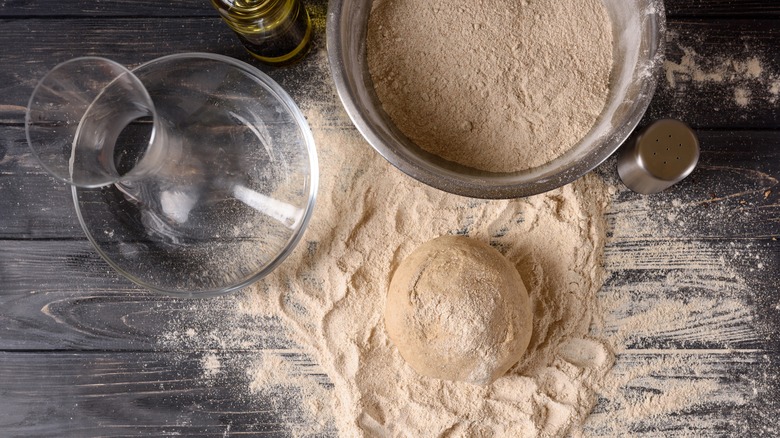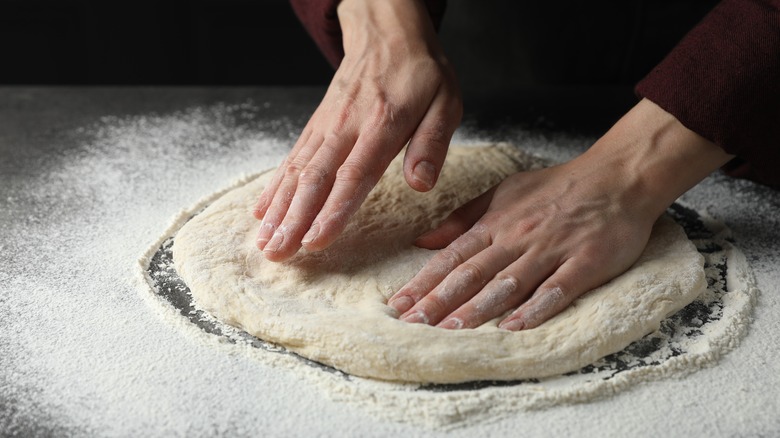What It Means When Pizza Dough Recipes Call For Fresh Yeast
Have you ever wondered how pizza dough gets its signature fluffy, bubbly texture? The answer is yeast, the leavener of choice in most basic pizza dough recipes. You're likely familiar with instant or active dry yeast, which is sold in dehydrated grains, but there's also fresh yeast: crumbly beige blocks of yeast cells that contain about 70% water. To find out which kind will best help your pizza dough rise to the occasion, Food Republic spoke to expert Serhan Ayhan, pizza consultant at New York's Krave It – home of the Dubai Chocolate dessert pizza.
The pizza expert confirmed that you can substitute dry yeast for fresh if the dehydrated version is all you have. However, the dry type does require a few extra steps. Compared to a certain amount of fresh yeast, "you can use about a third of the amount of instant dry yeast and half of active dry yeast," Ayhan told Food Republic, adding that "Active dry yeast needs to be activated in warm water before incorporating it into your dough."
The type of yeast also impacts the dough's flavor and texture, which is why some pizza makers have a preference for one type. Dry yeast has a much longer shelf life than fresh yeast, not to mention it's easier to find, but some say fresh has a more developed, sweeter flavor. Ayhan said that no matter which one you choose, all types of baker's yeast are the same form of fungus, and will allow your dough to properly rise and achieve the soft, chewy texture that you expect from a pizza.
Can you make pizza dough without any yeast?
When making pizza from scratch, you can experiment with fun new ways to enhance the flavors and texture of your dough, including ditching the yeast in favor of a different active ingredient. Serhan Ayhan told Food Republic, "While not necessarily better or worse, there is an alternative to commercial yeast: a sourdough starter." He explained that this essential type of bread starter contains both yeast and lactic acid bacteria, which will allow for your crust to rise while giving it extra acidity. A pre-fermented base results in a more powerful flavor.
If you are hoping to avoid yeast products altogether due to dietary restrictions, or you want to experiment with yet more alternative flavors, Ayhan shared one other ingredient you could try: yogurt. The expert says that this dairy product "creates a dough that is soft, tender, slightly chewy, and tangy." However, swapping in yogurt with abandon might be a mistake when making homemade pizza dough, resulting in a denser, less aerated crust. "[Yeast] provides the lightness that we all love in pizza," Ayhan said, "and breaks down the starches and sugars in flour that create the flavors that we find enjoyable." Ultimately, if you can use yeast in your dough, he recommends going the classic route.


